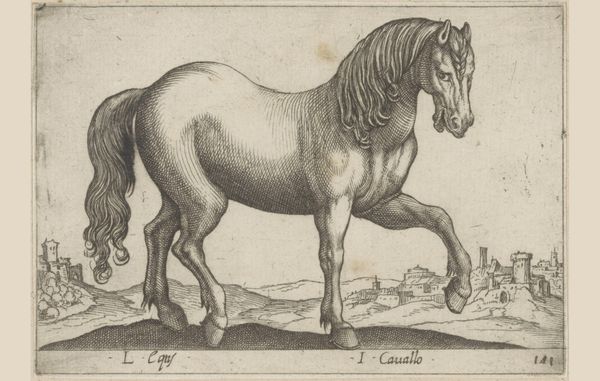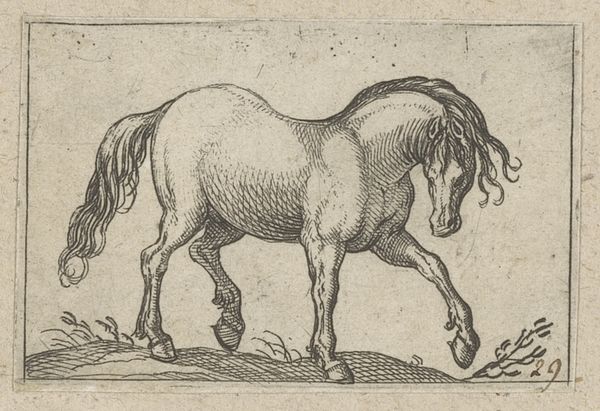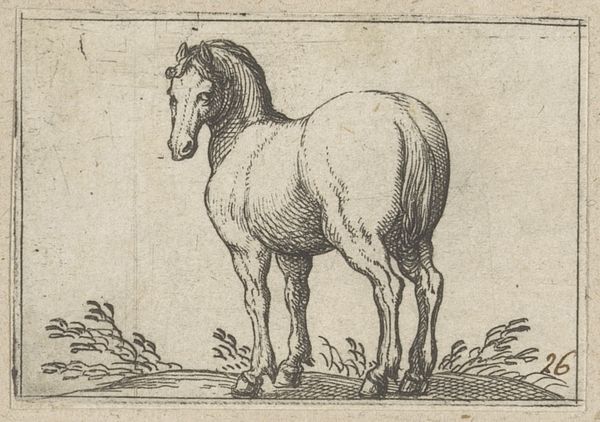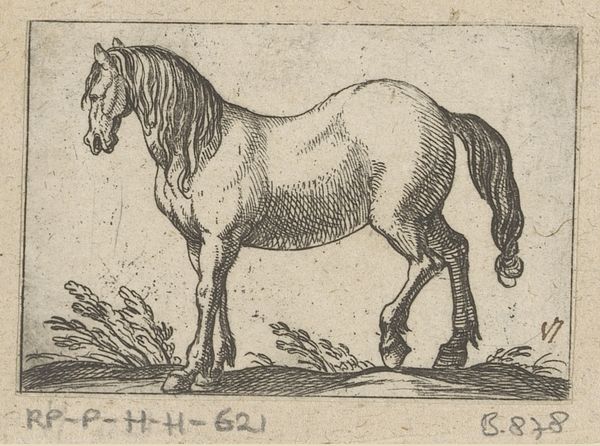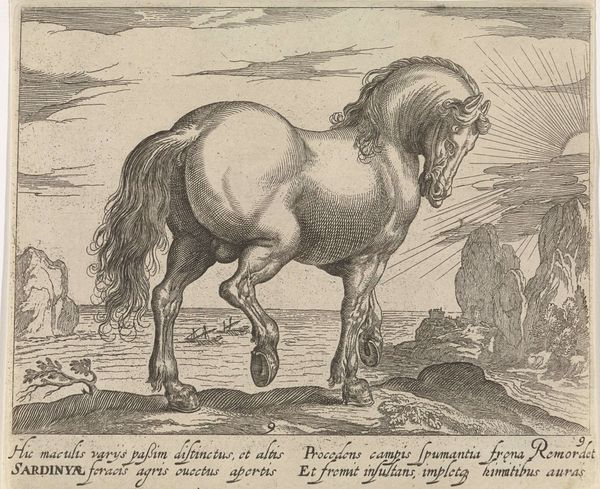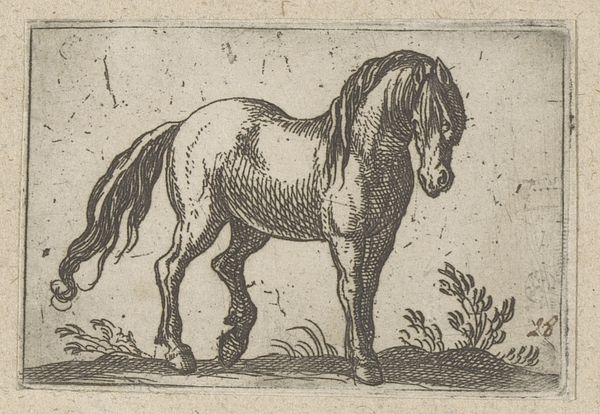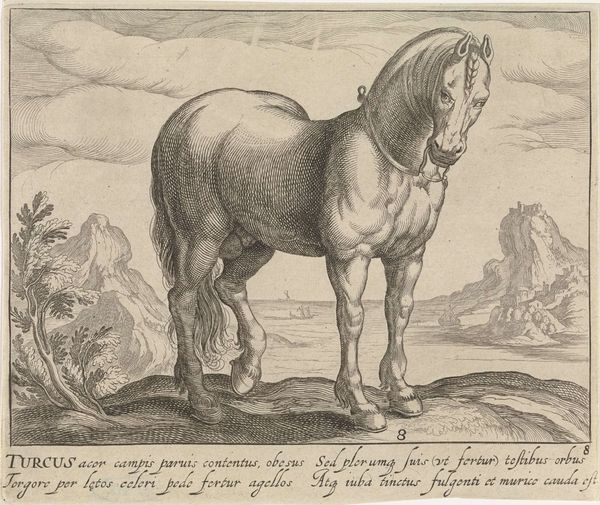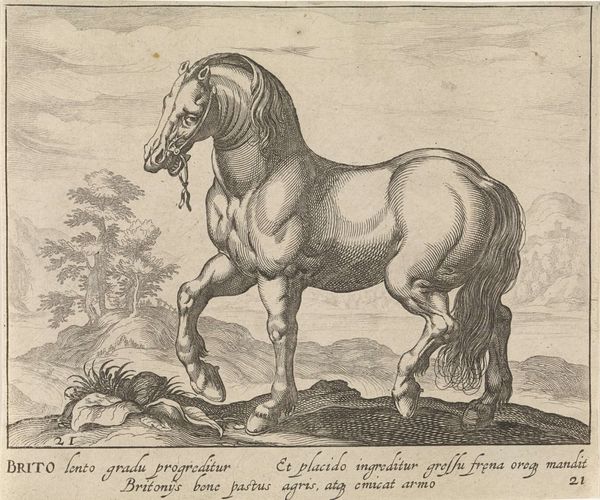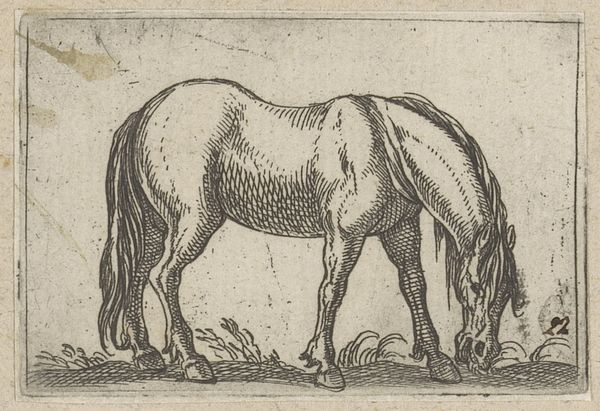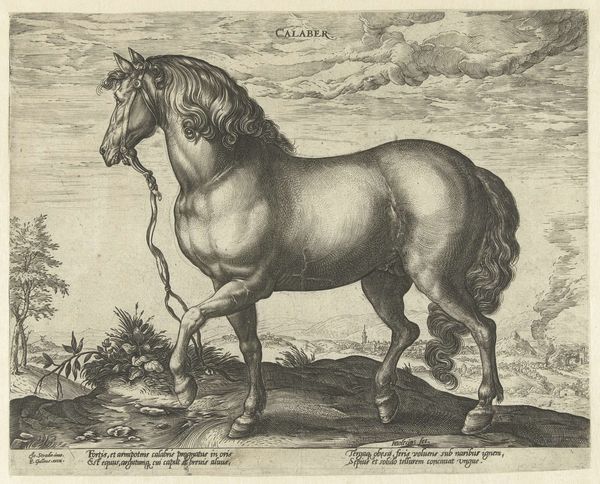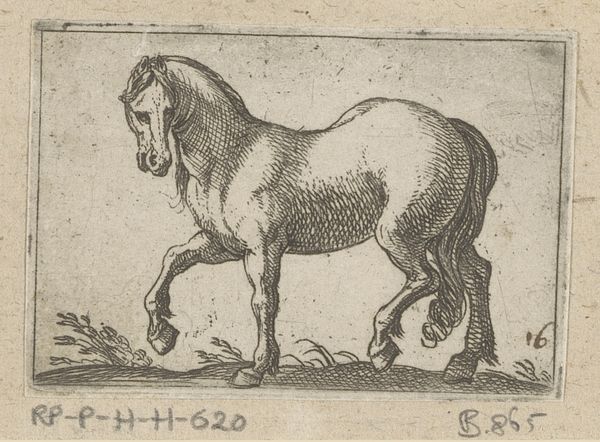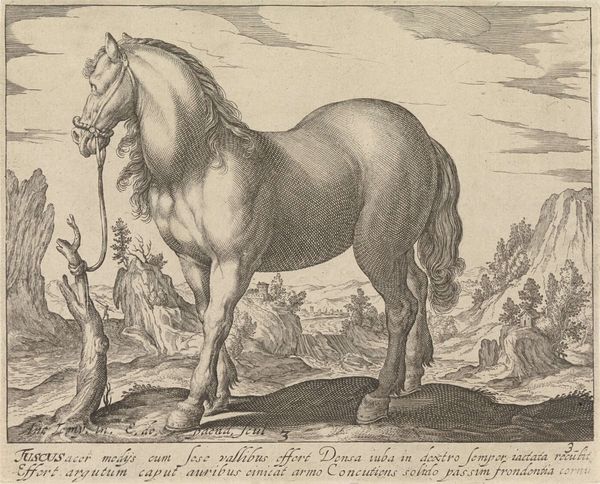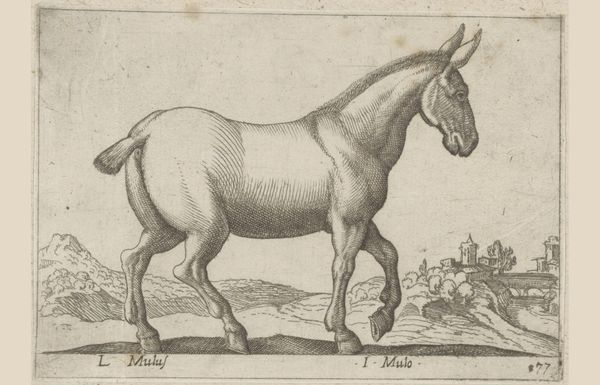
drawing, print, metal, engraving
#
drawing
#
animal
# print
#
metal
#
figuration
#
horse
#
engraving
#
realism
Dimensions: height 95 mm, width 137 mm
Copyright: Rijks Museum: Open Domain
Editor: This is "Fries paard," created before 1650 by Antonio Tempesta, currently at the Rijksmuseum. It is rendered as a drawing or print with metal engraving. I’m struck by the solidity of the horse, the overwhelming texture of its coat. What compositional elements stand out to you? Curator: Notice how Tempesta employs a precise network of hatched lines. The density and direction of these lines meticulously define the form, creating a pronounced sense of volume and musculature. Do you observe how this technique contributes to the static quality of the animal? Editor: I do, yes. The evenness of the hatching, it gives a sense of stillness even though a horse should be full of energy. Curator: Precisely. Furthermore, examine the background. Its subdued rendering throws the foregrounded horse into sharp relief, which isolates the subject and encourages an intense contemplation of its physical attributes. What theoretical frameworks might elucidate Tempesta’s artistic choices? Editor: Well, considering the formal elements, perhaps structuralism could help unpack the relationship between the details and the whole image, or even semiotics if we tried to decode the visual signs of the horse's "horseness." Curator: Precisely! The work prompts an intense examination of form and surface, foregrounding the materiality of the engraving itself. I hadn't considered applying semiotics, though. Editor: Thinking about the meticulous detail, it does almost seem like a study of equine form. Curator: Agreed. Through an analysis of line and form, the viewer comes away appreciating artistic practice as a distinct way of knowing and documenting the world.
Comments
No comments
Be the first to comment and join the conversation on the ultimate creative platform.
